Table of Contents
Introduction to Load Balancing
A load balancer helps us distribute incoming traffic or client requests to multiple backend resources(servers). It also ensures the availability, scalability and reliability of servers while serving those requests. It enables us to scale down and up as per requirements.
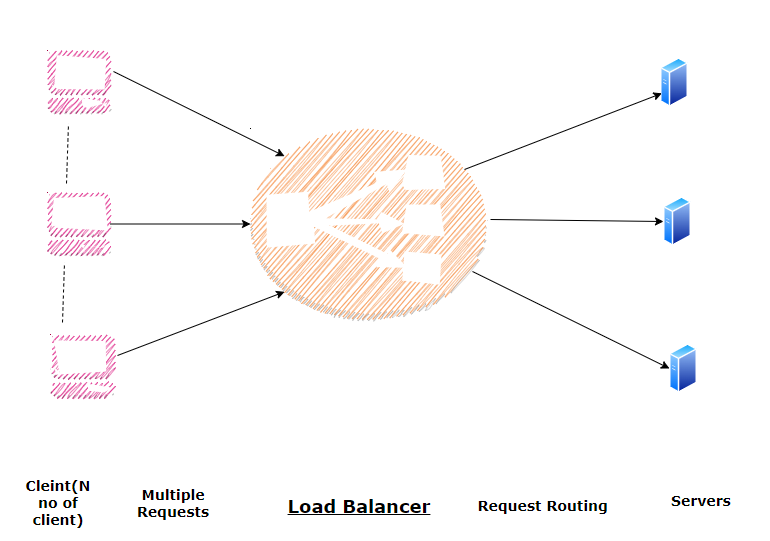
Why Is Load Balancing Important?
As no of requests/traffic grows for any service, we need to scale our resources; we need to increase no of servers that are serving requests.
This is required to meet the need for high volumes/performance.
Key Benefits of using a load balancer:
- Prevents Server Overloading
- Ensures high availability and reliability
- Allows seamless scalability
- Enhances fault tolerance
How Does a Load Balancer Work?
The load balancer is an intermediary between client requests and servers. It routes incoming requests by maximizing resource utilization and performance.
It also ensures no single point of failure, which means all requests should not go to only one server but rather be distributed evenly based on different algorithms.
Types of Load Balancing Algorithms
There are multiple load-balancing algorithms, and we will discuss some popular ones.
Static Load Balancing Algorithms
1. Round Robin Algorithm
Round robin is the simplest and most widely used round-robin algorithm.
It rotates incoming requests evenly and sequentially between the servers. However, it can overload any of the given servers if not properly monitored.

2. Sticky Round Robin Algorithm
The sticky Round Robin algorithm is the extension of the round-robin algorithm in this the subsequent requests coming from the same user will go to the same server. The goal is to improve performance by having related data on the same server. In this uneven load can easily occur as newly arriving users are assigned randomly.

3. Weighted Round Robin Algorithm
In the Weighted round-robin algorithm, the weights are assigned to different servers. Server with a higher weight will receive a higher no of requests this also helps when different servers have heterogenous capabilities. The only downside is loads are manually configured and are less adaptable to changes.
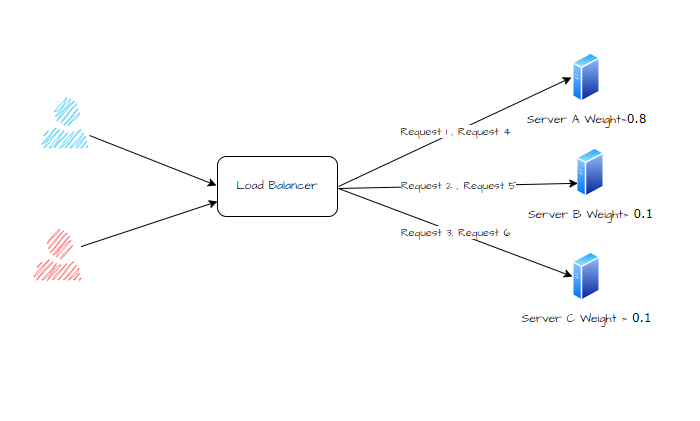
4. IP Hash / URL Hash Algorithm
Hash-based algorithms use the hash function to map incoming requests to the backend servers. The hash function uses client IP or requested URL as input to determine where to route each request. it can evenly distribute the requests if the function is chosen correctly
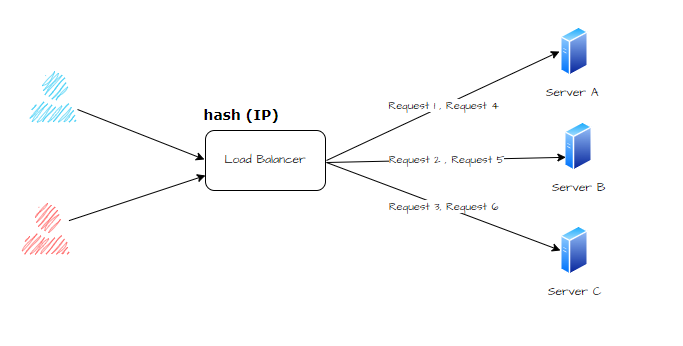
Dynamic Load Balancing Algorithms
Dynamic algorithms adapt in real-time by taking active performance metrics and server conditions into account when distributing requests.
1. Least Connections Algorithm
Least Connections algorithms send each new request to the server currently with the least number of active connections or open requests. this requires activity tracking the number of ongoing connections on each backend server. The advantage is that the new requests are adaptively routed to where there is most remaining capacity. however, the load can pile up on certain servers if connections pile up unevenly.
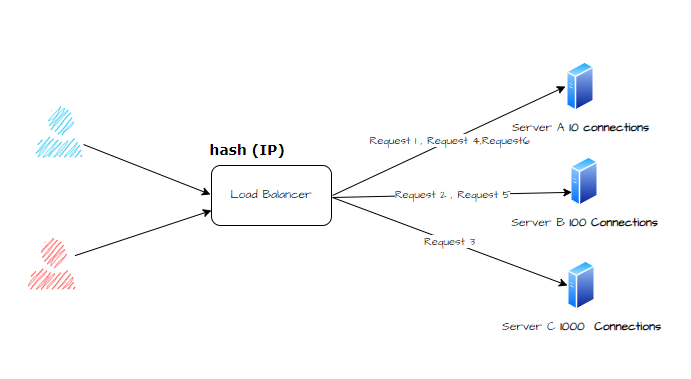
2. Least Time Algorithm
Least response time algorithms send incoming requests to the servers with the lowest current latency or fastest response time. Latency for each server is continuously measured and factored in. This approach is highly adaptive and reactive. However, it requires constant monitoring which incurs significant overhead and introduces complexity. It also doesn’t consider ow many existing requests each server already has
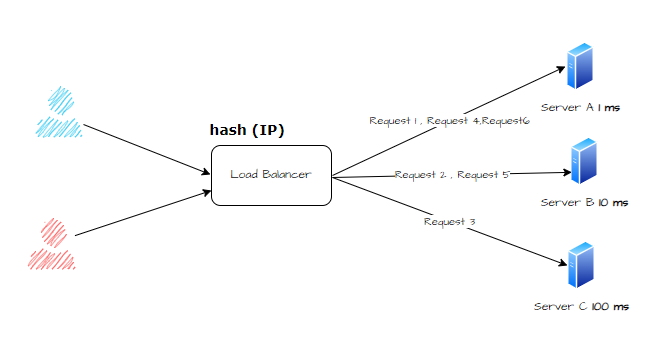
Conclusion
The choice of a load balancing algorithm depends on your application architecture, server resources, and traffic patterns. With the right balance of static and dynamic load balancing algorithms, you can opt for the best one for your demands

Leave a Reply to Microservices Architecture – The Devops Guy Cancel reply